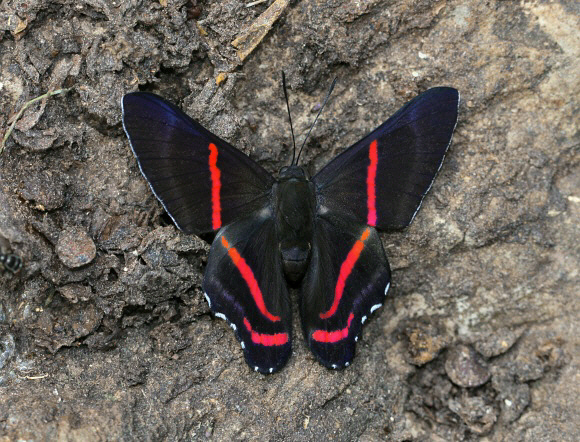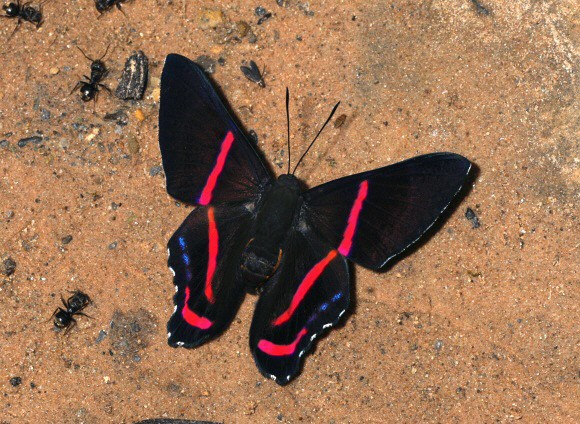 Ancyluris melior, Shima, Peru – Adrian Hoskins
Ancyluris melior, Shima, Peru – Adrian Hoskins
Introduction
The genus Ancyluris comprises of 16 beautiful tailed Riodinids, all confined to the neotropical region. They are closely related to the genus Rhetus, so much so that the females of Ancyluris aristodorus and Rhetus periander are almost indistinguishable, at least from the uppersides.
Most Ancyluris species have black uppersides marked with red bands which tend to be paler in the females. The configuration of the bands on the hindwings is the primary diagnostic for distinguishing between the various species. In melior the black ground colour often has a purplish sheen. Two species, formosissima and aristodorus are marked with broad white bands instead of the usual red. One species inca, has a flush of metallic blue on the upperside hindwings. Most species are bright metallic blue on the underside, marked in some species with patches of red. Males of all Ancyluris species have a blue iridescence on the underside of the wings.
Ancyluris melior is probably confined to Peru, and to Amazonas state, Brazil.
Habitats
This is a mid-elevation rainforest species found at altitudes between about 400-1000m.
Lifecycle
I have no data regarding melior but the lifecycle is likely to be similar to that of other Ancyluris species as follows: The eggs are white and highly sculptured. They are laid singly in fissures on the stems or twigs of the foodplants. Egg-laying females tend to settle high up, then walk backwards down the stem, probing with the ovipositor in various places before depositing each egg. The larval foodplants are trees in the families Melastomaceae and Euphorbiaceae. The larvae are gregarious, living in small groups of mixed instars. They are reported to be cannibalistic.
Adult behaviour
This is an uncommon species, but males can sometimes be found imbibing moisture from damp soil or from the edges of puddles or streams. They are nearly always encountered singly, and tend to avoid the heat of midday, preferring the cooler conditions of early morning or late afternoon.

Ancyluris melior, Satipo, Peru – Peter Bruce-Jones
